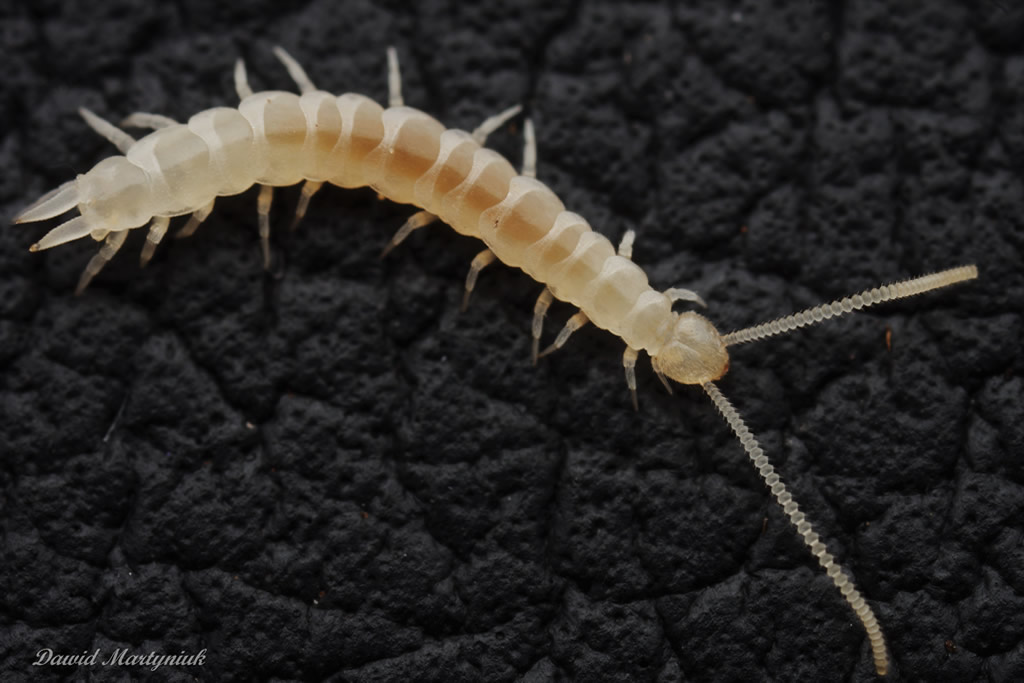Scutigerella causeyae Michelbacher, 1942
Status:
Common
ID Difficulty
Identification
Scutigerella causeyae is the largest, most common and most widespread of the 14 Symphylan species known from the UK. Reaching over 8mm, it is the species most likely to be encountered by searching in leaf litter and under logs as opposed to amongst plant roots on agricultural land.
S. causeyae and the slightly smaller S. lineatus are easily distinguished from all other British Symphylans by the well-developed front legs, deep cavity in the posteromedian cavity of the last tergite, and weakly concave rear margin of the second tergite. Separation of those two species is more problematic, but males (identified by their curved genital plates between the 4th coxae) of S. lineatus have a peg-like projection on the trochanter of their first pair of legs, which is lacking in S. causeyae. S. causeyae is also said to have longer and denser setae than S. lineatus.
Distribution
Scutigerella causeyae is the most widespread of the 14 Symphylan species known from the UK. [However, no records are shown on the NBN map opposite reflecting the paucity of recording of Symphylans in general].
Habitat
It is the species most likely to be encountered by searching in leaf litter and under logs as opposed to amongst plant roots on agricultural land.
References
Edwards, C.A. (1959) A revision of the British Symphyla. Proceedings of the Zoological Society of London 132: 403-439.
Hopkin, S.P. & Roberts, A.W. (1988) Symphyla – the least studied of the most interesting soil animals. Bulletin of the British Myriapod Group 5: 28-34.
Links
MilliBase - Global catalogue of Symphylans: https://millibase.org/aphia.php?p=taxdetails&id=1006436



